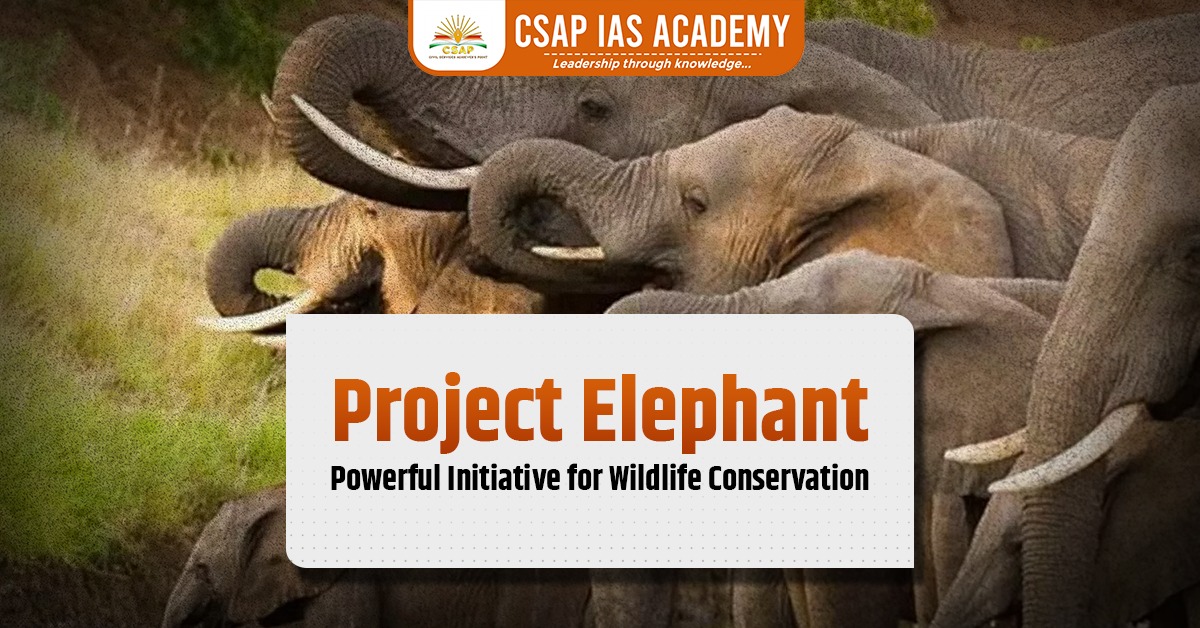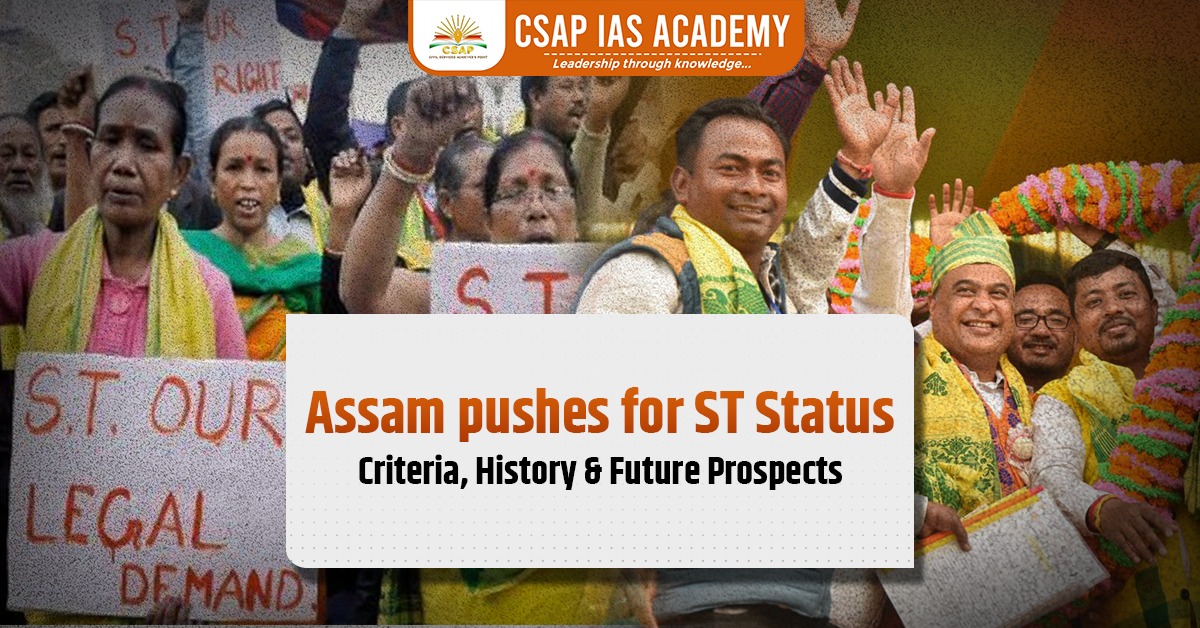Project Elephant is a flagship conservation initiative launched by the Government of India in 1992 to protect elephants and their habitats. With a focus on reducing human-elephant conflict, combating poaching, and ensuring sustainable habitats, this initiative has played a crucial role in safeguarding India’s elephant population.
This article explores the objectives, strategies, achievements, challenges, and major conservation initiatives under Project Elephant.
About Project Elephant in India
✔ Launched in 1992 by the Government of India.
✔ Aims to protect elephants from poaching and habitat loss.
✔ Works towards mitigating human-elephant conflicts.
✔ Establishes protected areas and wildlife corridors for elephant movement.
✔ Promotes research & monitoring of elephant populations and health.
Objectives of Project Elephant

✔ Ensure the long-term survival of viable wild elephant populations.
✔ Address human-elephant conflict and promote coexistence.
✔ Develop scientific management measures for conservation.
✔ Prevent poaching and illegal ivory trade.
Elephant Corridors: Ensuring Safe Movement
🚪 Elephant corridors are narrow forested passages connecting larger habitats, allowing elephants to move freely and survive.
📌 India has 150 identified elephant corridors (Elephant Corridors of India Report 2023).
Threats to Elephant Corridors
🛑 Habitat Loss – Urbanization, roads, railways, and mining projects.
🛑 Human-Wildlife Conflict – Crop raiding and retaliation from farmers.
🛑 Poaching – High demand for elephant ivory.
🛑 Food Scarcity – Limited grazing areas, forcing elephants to enter human settlements.
Strategies for Corridor Protection & Conflict Mitigation
✅ Integrating corridors with protected areas to ensure safe passage.
✅ Declaring key corridors as Ecologically Sensitive Areas (ESAs).
✅ Habitat restoration & monitoring animal movement.
✅ Community sensitization & voluntary relocation programs for people in conflict zones.
✅ Strict anti-encroachment measures to prevent illegal land use.
Major Initiatives for Elephant Conservation
Monitoring of Illegal Killing of Elephants (MIKE) Programme
✔ Mandated by CITES (Convention on International Trade in Endangered Species).
✔ Launched in 2003 in South Asia to track poaching trends and improve enforcement.
Haathi Mere Saathi Campaign
✔ Launched by the Ministry of Environment & Wildlife Trust of India (WTI) in 2011.
✔ Aims to promote coexistence between humans and elephants.
✔ First introduced at the “Elephant-8” Ministerial meeting in Delhi.
Project RE-HAB (Reducing Elephant-Human Attacks using Bees)
✔ Launched in Karnataka (2021) and expanded to Assam.
✔ Uses bee-fences (bee boxes in elephant pathways) to deter them from human settlements.
✔ Over 70% reduction in elephant attacks in affected areas.
Elephant Reserves in India
📍 Elephant Reserves are designated areas focusing on the protection of Asian elephants and their habitats.
📌 India is home to 60% of the world’s Asian elephant population.
📌 Notable reserves include Periyar Wildlife Sanctuary (Kerala) and Kaziranga National Park (Assam).
📌 Elephant Reserves help maintain biodiversity and ecological balance.
World Elephant Day: Raising Awareness
📅 Observed on August 12, dedicated to elephant conservation.
📢 Highlights issues like poaching, habitat destruction, and human-elephant conflict.
📌 Encourages global action for elephant protection.
Key Highlights of Elephants
India’s National Heritage Animal
✔ Elephants are “Keystone Species” – crucial for maintaining forest ecosystems.
✔ Largest-brained land animal, known for intelligence and memory.
Role in Ecosystem
✔ Seed Dispersers – Help forests regenerate by spreading seeds.
✔ Water Providers – Dig for water, benefiting other species.
✔ Forest Shapers – Create clearings that help plant growth.
Conservation Status
- IUCN Red List
✔ Asian Elephant – Endangered
✔ African Savanna Elephant – Endangered
✔ African Forest Elephant – Critically Endangered
CITES: Appendix I (strictest protection) for Asian Elephants.
Wildlife (Protection) Act, 1972: Schedule I (highest legal protection).

India’s Participation in Global Conservation Efforts
✔ Conference of Parties (CITES & CMS) – India plays a major role in shaping international policies for elephant conservation.
✔ MIKE Programme Sites in India (monitoring poaching and illegal trade):
📍 Chirang-Ripu (Assam)
📍 Deomali (Arunachal Pradesh)
📍 Dihing Patkai (Assam)
📍 Garo Hills (Meghalaya)
📍 Eastern Dooars (West Bengal)
📍 Mayurbhanj (Odisha)
📍 Shivalik (Uttarakhand)
📍 Mysore (Karnataka)
📍 Nilgiri (Tamil Nadu)
📍 Wayanad (Kerala)
Conclusion
Project Elephant is a cornerstone of India’s wildlife conservation efforts, successfully protecting elephant populations while addressing poaching, habitat destruction, and human-elephant conflicts.
However, challenges like habitat fragmentation and urban encroachment persist, requiring continuous innovation in conservation strategies. Initiatives like Project RE-HAB, MIKE, and Haathi Mere Saathi showcase India’s commitment to sustainable coexistence and biodiversity protection.
As global awareness grows, collective action remains essential to ensure a future where elephants and humans thrive together.
Read: One Nation, One Election
Download App:











